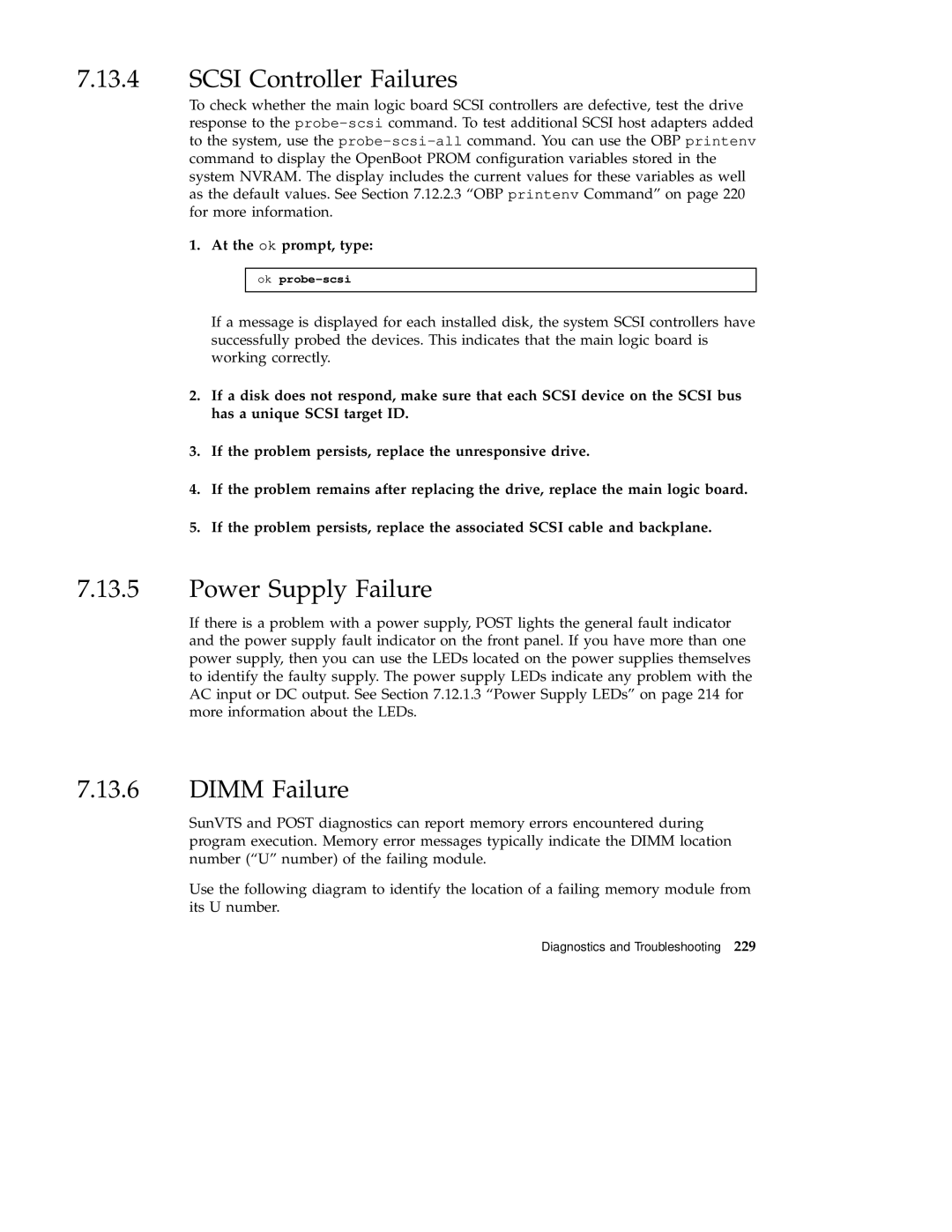7.13.4SCSI Controller Failures
To check whether the main logic board SCSI controllers are defective, test the drive response to the
1. At the ok prompt, type:
ok probe-scsi
If a message is displayed for each installed disk, the system SCSI controllers have successfully probed the devices. This indicates that the main logic board is working correctly.
2.If a disk does not respond, make sure that each SCSI device on the SCSI bus has a unique SCSI target ID.
3.If the problem persists, replace the unresponsive drive.
4.If the problem remains after replacing the drive, replace the main logic board.
5.If the problem persists, replace the associated SCSI cable and backplane.
7.13.5Power Supply Failure
If there is a problem with a power supply, POST lights the general fault indicator and the power supply fault indicator on the front panel. If you have more than one power supply, then you can use the LEDs located on the power supplies themselves to identify the faulty supply. The power supply LEDs indicate any problem with the AC input or DC output. See Section 7.12.1.3 “Power Supply LEDs” on page 214 for more information about the LEDs.
7.13.6DIMM Failure
SunVTS and POST diagnostics can report memory errors encountered during program execution. Memory error messages typically indicate the DIMM location number (“U” number) of the failing module.
Use the following diagram to identify the location of a failing memory module from its U number.
